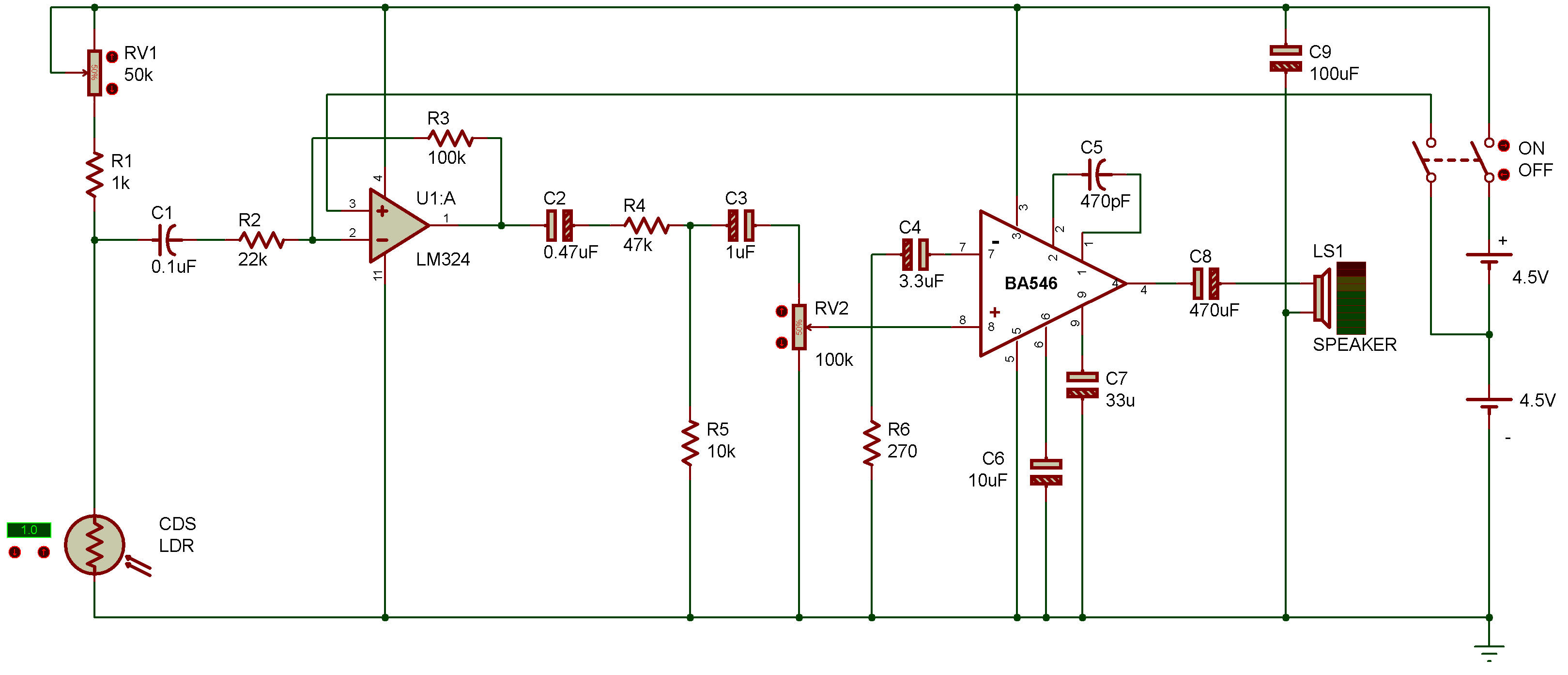
Light source sensing circuit by sound BA546
LM324

In this project, you'll listen to an imaginary sound of a light.
Incandescent or fluorescent lamps used in homes light on AC voltage, so actually they are flickering, though the effect is not sensed to the eye. More precisely, the light intensity is changing with the AC voltage. The changes will be produced as a sound that you'll hear in this project.
When you finish wiring, turn power ON and expose the CdS cell to the light from a fluorescent lamp. Rotate the control volume (50K) so that a hum is heard from the speaker. The sound volume can be adjusted with the control volume (100K).
Then, shed the light of a flashlight on the CdS cell. What happened?
This light did not produce a sound. Because the flashlight is driven on a battery (DC voltage), its light does not change. Try using various lights and listen to the sounds to judge if each light source is driven on AC or DC.
In this circuit, the varying quantity of light from the CdS cell is amplified by the OP amplifier U1 A. This signal is further amplified through the power amplifier U2 before it is emitted from the speaker. The frequency of AC voltage is 60 Hz or 50 Hz, depending on the country. That's why the frequency sounds fairly low.
